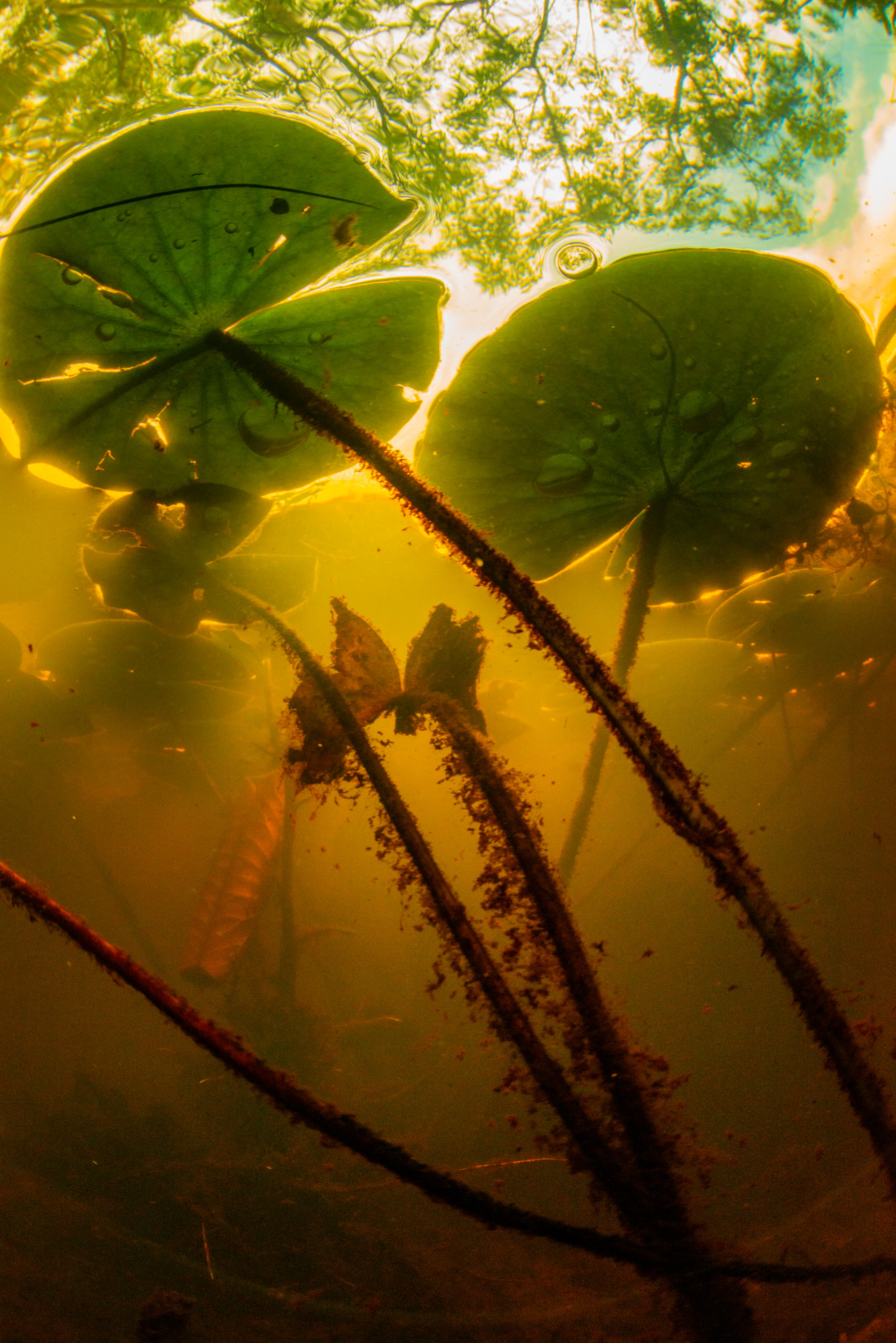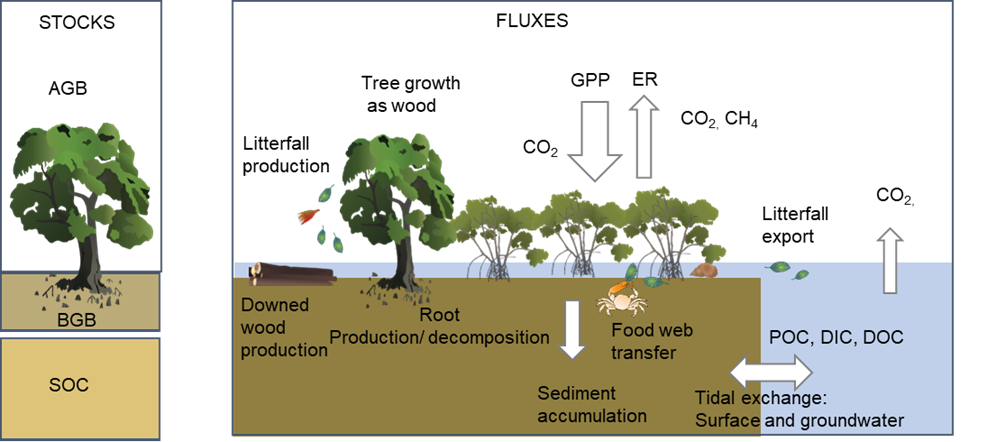|
|
Carbon in water and wetlandsCarbon is one of the most common elements in the universe and provides structure for all living organisms in the Planet. Plants and algae obtain carbon from the atmosphere as carbon dioxide (CO2) and fix it through photosynthesis to form sugars from which the feed. Animals can then consume these plants and obtain food from them. Wetlands have productive vegetation converting carbon dioxide in the atmosphere to plant biomass. Some of this carbon can preserved in the wetlands’ soil, which is low in oxygen, and thus, has low decomposition. This is why wetlands can reduce the levels of carbon dioxide in the atmosphere, reducing greenhouse gases and the effects of climate change. Information on this topic is available at the following web page: Why is carbon important?
Figure 1Carbon fluxes in tidal wetlands. Stocks are the carbon stored in the long-term (carbon density per area) and fluxes are processes that involve the conversion of one form of carbon to the other (carbon per area per unit of time). GPP is gross primary productivity (or CO2 fixed), ER is ecosystem respiration (CO2 and CH4 released); POC is particulate organic carbon (e.g., leaves), DOC is dissolved organic carbon (e.g. amino acids) and DIC is dissolved inorganic carbon (e.g. carbonates). For more information on carbon storage and blue carbon in wetlands, see Wetlands and the Carbon Cycle. For more information about carbon processes and the carbon cycle, see Cycles Last updated: 14 September 2023 This page should be cited as: Department of Environment, Science and Innovation, Queensland (2023) Carbon in water and wetlands, WetlandInfo website, accessed 8 May 2025. Available at: https://wetlandinfo.des.qld.gov.au/wetlands/ecology/components/water-chemical/carbon/ |

 — Department of the Environment, Tourism, Science and Innovation
— Department of the Environment, Tourism, Science and Innovation



